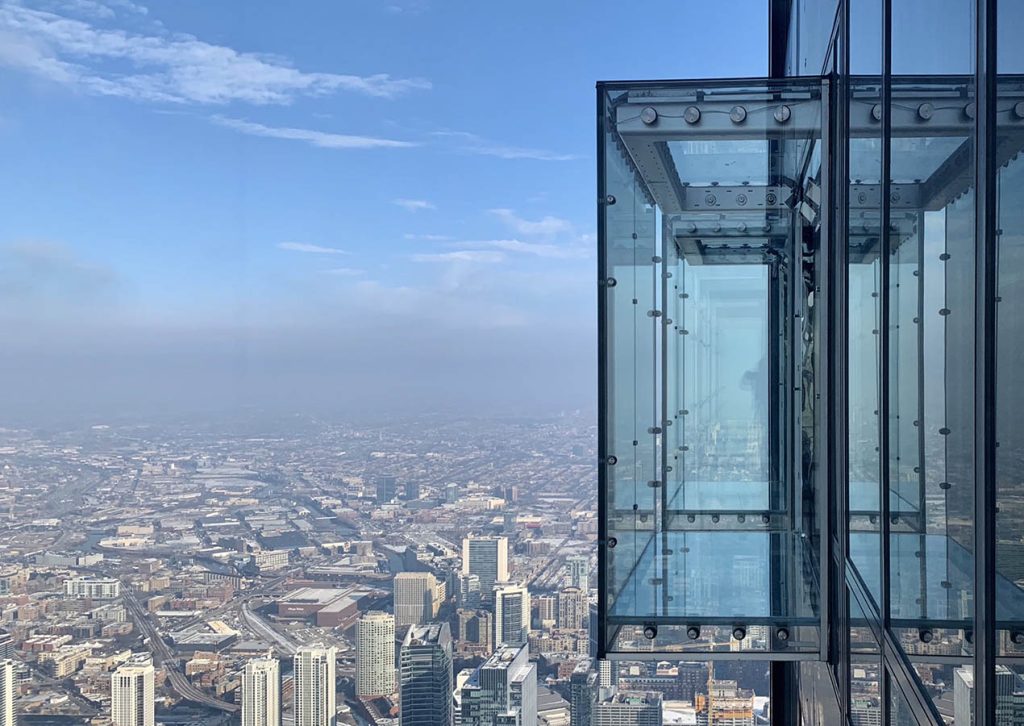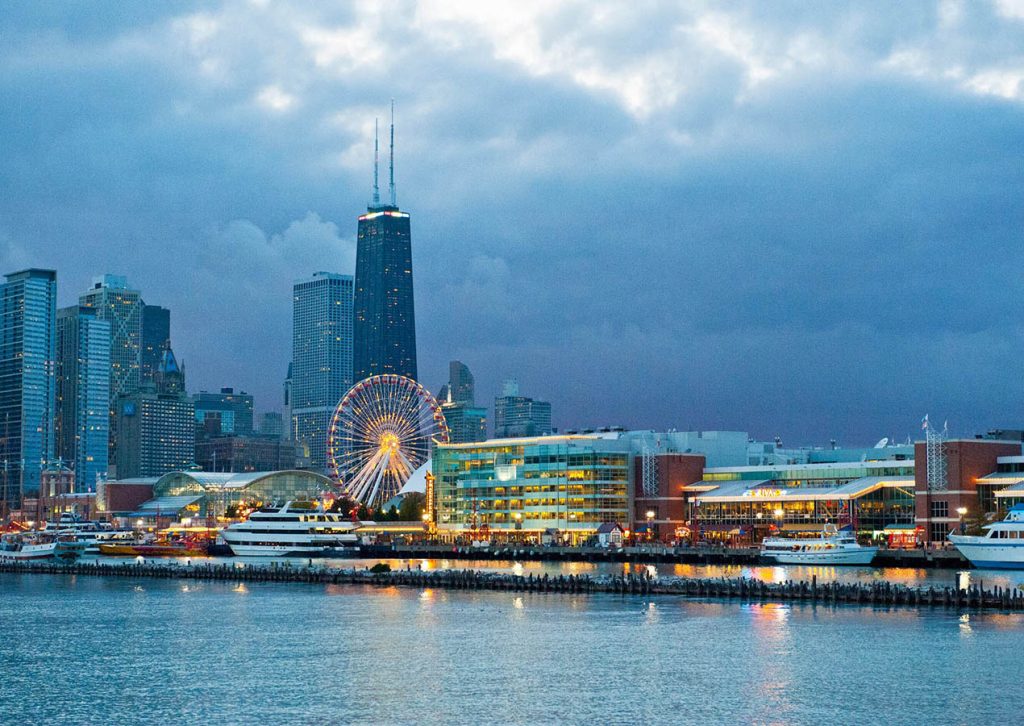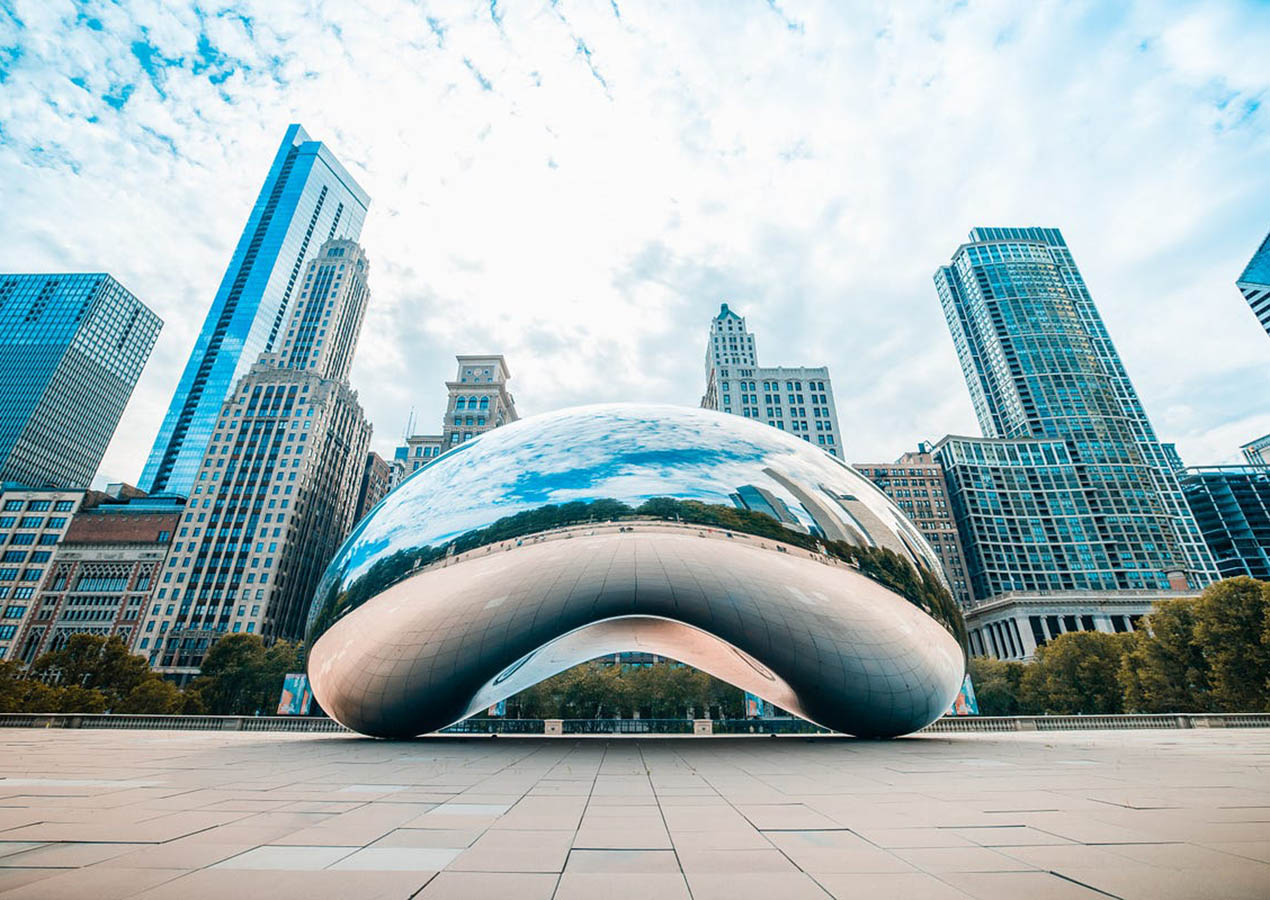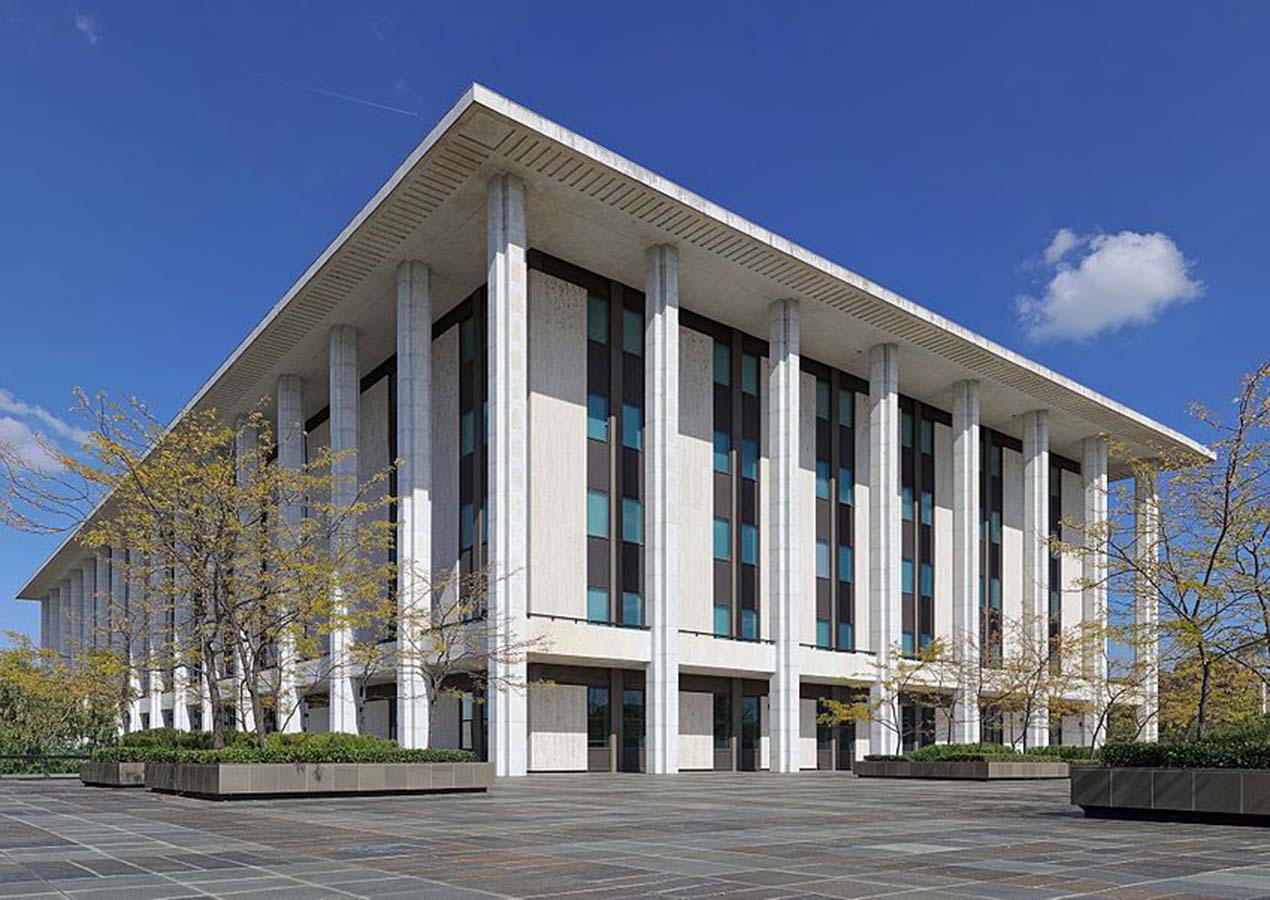Chicago, famously known as the Windy City, boasts an array of architectural wonders that attract globetrotters worldwide. I recently embarked on an enthralling exploration of Chicago’s iconic landmarks, with a special focus on the renowned Cloud Gate, affectionately called “The Bean.”
Cloud Gate (The Bean): A Glimpse into Chicago’s Skyline Reflection
Located in Millennium Park, Cloud Gate is a striking stainless steel sculpture designed by artist Anish Kapoor. This masterpiece has become synonymous with Chicago’s architectural brilliance.
Entering Millennium Park felt like stepping into a surreal dreamscape. The polished surface of The Bean offered captivating reflections of the surrounding skyscrapers and the ever-changing Chicago sky. Whether it was dawn or dusk, the interplay of light on the sculpture was enchanting, making it a haven for photography enthusiasts.
Millennium Park provides amenities such as benches, restrooms, and informative signage, ensuring a comfortable visit. The park also hosts various art installations and performances, adding to the overall experience.
The highlight undoubtedly lies in the unique visual experience offered by Cloud Gate. However, the popularity of the site translates into sizable crowds, particularly during weekends and holidays, which can detract from the tranquility of the visit.
Cloud Gate is centrally positioned in Millennium Park, at 201 E Randolph St, Chicago, IL 60602, facilitating easy access to nearby attractions.
For those using public transport, the Chicago ‘L’ train system is convenient, with the Millennium Park Station in proximity. If opting for a drive, ample parking is available in the vicinity.
While admission to the park is free, parking fees may apply. Booking parking in advance through platforms like SpotHero often provides discounts and streamlined access.
Visiting Cloud Gate is a must, but timing is crucial. Opt for early morning visits on weekdays for a more serene experience and optimal lighting for photography.
Willis Tower Skydeck: A Panoramic Glimpse of the Magnificent Mile
Formerly known as the Sears Tower, the Willis Tower stands tall as one of the Western Hemisphere’s tallest buildings. Its Skydeck offers breathtaking panoramic views of Chicago, making it a must-visit for architecture enthusiasts.
Ascending to the 103rd floor, I found myself standing on a glass ledge extending beyond the building’s edge. The view of Chicago’s skyline and Lake Michigan is a jaw-dropping testament to human ingenuity and engineering.
The Skydeck provides guided tours, informational displays, and a gift shop. Professional photographers are available to capture visitors against the stunning backdrop.
The unparalleled view from the Skydeck is the highlight. However, queues, especially during peak hours, can be extensive. Consider purchasing a Fast Pass for a more efficient visit.
Willis Tower is situated at 233 S Wacker Dr, Chicago, IL 60606, in the heart of the city’s financial district.

Accessible via public transport, the ‘L’ train’s Quincy/Wells station is a short walk away. For those driving, parking options are available nearby.
Online tickets often come with reduced prices and allow for a quicker entrance. Websites like the official Skydeck site frequently feature promotions, and combo tickets with other attractions can provide additional discounts.
Timing is crucial to avoid crowds. Aim for an early morning or late afternoon visit on weekdays for a more enjoyable experience. Don’t forget your camera – the photo opportunities are unparalleled.
Art Institute of Chicago: A Fusion of Culture and Creativity
The Art Institute of Chicago is a cultural haven housing an extensive collection of artworks spanning various eras and regions. From ancient artifacts to contemporary masterpieces, it’s a treasure trove for art enthusiasts.
Wandering through the halls of the Art Institute felt like traversing through time and space. The diverse range of exhibits, including iconic works like Grant Wood’s “American Gothic” and Seurat’s “A Sunday on La Grande Jatte,” left me in awe of human creativity.
The museum offers guided tours, educational programs, and special exhibitions. Dining options and gift shops are also available within the premises.
The richness of the collection is a definite advantage. However, the sheer vastness of the museum can be overwhelming, requiring strategic planning to explore efficiently.
The Art Institute is located at 111 S Michigan Ave, Chicago, IL 60603, nestled in Grant Park, providing a scenic backdrop to your visit.
Accessible by the ‘L’ train, the Adams/Wabash station is nearby. While parking options are available, public transport is recommended due to potential downtown traffic.
Consider purchasing a CityPASS for discounted access to multiple attractions, including the Art Institute. Online tickets often come with reduced prices and allow for a quicker entrance.
Allocate sufficient time for your visit, focusing on specific exhibits of interest. The museum can be overwhelming in a single day, so plan multiple visits or prioritize key sections.
Chicago Riverwalk: A Riverside Stroll Amid Urban Beauty
The Chicago Riverwalk is a scenic promenade along the Chicago River, offering a tranquil escape from the city’s hustle and bustle. Lined with cafes, art installations, and gardens, it’s a serene haven in downtown Chicago.
A leisurely stroll along the Riverwalk provided a refreshing perspective of Chicago’s architecture. From iconic bridges to vibrant murals and occasional water taxis passing by, every step was a visual feast.
Numerous cafes and restaurants line the Riverwalk, providing the perfect opportunity to savor local cuisine while enjoying the scenic views. Boat tours and kayak rentals are also available for a more immersive experience.
The serene ambiance and beautiful surroundings are major advantages. However, during peak hours, the Riverwalk can get crowded, affecting the peaceful experience.
The Riverwalk stretches along the south bank of the Chicago River, accessible from various points, including Wacker Drive and Michigan Avenue.
Being centrally located, the Riverwalk is easily reachable by foot from many downtown attractions. Water taxi services and boat tours also provide alternative transportation.
While the Riverwalk itself is free, consider combining a visit with a boat tour or a meal at one of the riverside restaurants. Booking platforms like OpenTable can help secure reservations.
The Riverwalk is an excellent spot for a relaxing afternoon. To avoid crowds, consider visiting on weekdays or early mornings. Grab a coffee, find a bench, and soak in the beauty of the Chicago River.
Navy Pier: An Entertainment Extravaganza on Lake Michigan
Navy Pier is a bustling entertainment complex situated on the shores of Lake Michigan. With attractions like the iconic Ferris wheel, it serves as a one-stop destination for family-friendly fun.

Navigating through the vibrant atmosphere of Navy Pier felt like entering a carnival. From the Ferris wheel’s breathtaking views to lively street performers and diverse dining options, it caters to a wide range of interests.
Navy Pier offers boat tours, theater performances, and a myriad of dining options, including the renowned Navy Pier Signature Room. The Children’s Museum and the Chicago Shakespeare Theater are additional highlights.
The Pier’s diverse offerings cater to various tastes, making it a great family destination. However, it can get crowded, especially on weekends and during special events.
Navy Pier is located at 600 E Grand Ave, Chicago, IL 60611, extending into Lake Michigan, providing stunning views of the city skyline.
Accessible by public transport, the Navy Pier is a popular stop for buses and trolleys. Parking is available on-site and in nearby garages.
Look for combo tickets that include multiple attractions on the Pier. Online platforms often provide discounted rates for boat tours and other experiences.
Navy Pier is best enjoyed in the evening when the city lights illuminate the skyline. Plan your visit to coincide with sunset for a magical experience.
Chicago Cultural Center: Unveiling Hidden Artistic Riches
The Chicago Cultural Center, housed in the historic former Chicago Public Library building, is a cultural hub offering free public events, exhibitions, and stunning architectural features.
The Cultural Center surprised me with its grandeur and artistic richness. The Tiffany Dome, a breathtaking stained glass masterpiece, and the Preston Bradley Hall, with its intricate mosaics, provided a unique blend of history and creativity.
Free public events, concerts, and art exhibitions are regularly hosted. Guided tours are available for those interested in delving deeper into the building’s history and architectural significance.
The Cultural Center offers a serene and culturally rich environment. However, limited dining options within the center may necessitate planning for meals.
Located at 78 E Washington St, Chicago, IL 60602, the Cultural Center is conveniently situated in the Loop, near Millennium Park.
The ‘L’ train’s Washington/Wabash station is nearby, and several bus routes pass through the area. Parking garages are available, but public transport is recommended.
Admission to the Cultural Center is free, making it an affordable and accessible cultural experience. Check the official website for information on upcoming events and exhibitions.
The Cultural Center is an excellent spot for a quiet retreat into art and history. Combine your visit with nearby attractions like Millennium Park for a comprehensive exploration.
Chicago stands as a testament to human ingenuity and architectural brilliance, offering a diverse range of attractions for every type of traveler. From the captivating reflections of Cloud Gate to the awe-inspiring views from the Willis Tower Skydeck, the city unfolds as a canvas of creativity and innovation.
While my personal experiences at Cloud Gate, the Willis Tower Skydeck, and the Art Institute left an indelible mark, the additional recommendations of the Chicago Riverwalk, Navy Pier, and the Chicago Cultural Center further enriched my journey. Each destination showcased a different facet of Chicago’s charm, from its serene riverside retreats to its bustling entertainment hubs and cultural treasures.
When navigating these architectural marvels, strategic planning is essential, considering factors like timing, crowds, and transportation. Embracing the city’s diverse offerings requires a balance of iconic landmarks and hidden gems, ensuring a comprehensive exploration of Chicago’s rich tapestry.
I encourage fellow adventurers to immerse themselves fully in Chicago’s architectural wonders, discovering the city’s soul through its skyline, art, and culture. Whether capturing reflections at sunrise or savoring a sunset from Navy Pier, the Windy City invites you to embark on a journey of architectural discovery like no other.




